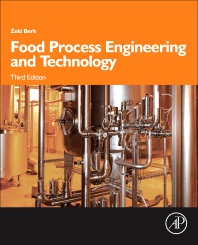Food Safety
How to know if your plant needs environmental monitoring
As Preventive Controls Regulation is finalized, food makers should be aware of how it affects them.

The Preventive Controls Regulation, or as it is officially known, the Current Good Manufacturing Practice and Hazard Analysis and Risk-Based Preventive Controls for Human Food, was finalized in late 2015 and may be found in 21 CFR Part 117. One key element in the regulation may be found in Section165, Verification of Implementation and Effectiveness, which reads as follows:
(a)Verification activities. You must verify that the preventive controls are consistently implemented and are effectively and significantly minimizing or preventing the hazards. To do so, you must conduct activities that include the following, as appropriate to the facility, the food, and the nature of the preventive control and its role in the facility’s food safety system:
(1) Calibration of process monitoring instruments and verification instruments (or checking them for accuracy);
(2) Product testing, for a pathogen (or appropriate indicator organism) or other hazard;
(3) Environmental monitoring, for an environmental pathogen or for an appropriate indicator organism, if contamination of a ready-to-eat food with an environmental pathogen is a hazard requiring a preventive control, by collecting and testing environmental samples.
The food industry has been waiting for this regulation and the others issued to allow enforcement of the Food Safety Modernization Act of 2010 for years. Some of the elements have hung over the industry like the Sword of Damocles, especially the environmental monitoring issue.
Industry concerns and paranoia over environmental monitoring have been magnified by some of the third-party audit schemes. In hopes of preparing industry for this eventuality, these audits were modified to include “FSMA Preparedness” elements, which included environmental monitoring. The problem with many of these audits is that they are checklist-type audits, and companies were made to feel that environmental monitoring was mandatory—no matter what they were producing. One simply cannot apply these criteria across the board. A ready-to-eat meat product or fresh-cut greens are vastly different than a shelf-stable sauce, condiment or syrup, yet all seemed to be painted with the same brush.
As may be seen in 165 (a) (3), the requirement for environmental monitoring applies only “if contamination of a ready-to-eat food with an environmental pathogen is a hazard requiring a preventive control.” So, the way the regulation was finally drafted obviously does not mandate environmental monitoring for all food products. However, when developing your food safety management system and, especially, when conducting your hazard analysis, it is imperative that the risk assessment include a detailed evaluation of whether environmental monitoring is first necessary in your operation. If the end-result of that assessment is “yes,” how will this essential and necessary element be incorporated in your food safety program?
There are some excellent references available to the food industry that describe how an environmental monitoring system may be set up. Documents prepared by the Almond Board of California and the United Fresh Produce Association would be excellent references for any company, when it comes to better understanding these programs. The Almond Board of California’s document is entitled “Pathogen Environmental Monitoring” and focuses on Salmonella as a potential contaminant, whereas the title of the United Fresh document says it all: “Guidance on Environmental Monitoring and Control of Listeria for the Fresh Produce Industry.” Both documents provide background information on the program and emphasize that environmental monitoring may also incorporate programs for monitoring non-pathogens as indicator organisms.
The concerns with the two pathogens noted above are the focus of monitoring for pathogens in your plants. These organisms may come into the plant on product, especially raw agricultural commodities, and meats and poultry. They can also contaminate products that have been subjected to a “kill step” after processing but before packaging. This is why handling raw and cooked products together is a bad idea, and many plants are designed to ensure distinct segregation between the raw and cooked items. The environment itself can also be a vehicle to spread pathogens. Dusting, traffic flow, personnel garments and even cleanup can spread contamination.
Large companies that have in-house microbiological support services usually have the in-house expertise to develop an environmental monitoring program. However, small- to medium-sized companies do not. If environmental monitoring is a legal requirement or deemed essential following their risk assessment, these companies must look for outside help. Seek out a consultant or a reputable testing laboratory to help develop the program, which can be quite complex.
Issues that must be considered when building the program include where to sample (see Figure 1); what are the target organisms; how often to sample; who will do the sampling; how many samples should be taken; will samples be shipped to the contractor or picked up; how product should be handled when samples are collected; and what corrective actions should be taken, if there are positives. Of course, all of these procedures must be developed, documented and implemented, which includes documented training of all persons involved with the program.
Perhaps the biggest challenge for food processors may be how they handle presumptive or actual positive samples, as there will be different protocols for how such issues will be addressed for each of the zones. For example, if an operator is sampling in Zone 1 (or Product Contact Surfaces), it is imperative that any product manufactured on that day be held until results are in and confirmed as negative.
Another challenge is selecting sampling sites. Using sampling sites that are easy to clean can provide an operation with a false sense of security. Look for sites that are harder to clean and may harbor pathogens or other organisms. It is also useful to vary where samples are collected. Many companies implement programs that may define up to 25 or 30 sampling sites, but will only collect eight to 10 samples each week. They utilize random-number generators to determine where they will sample. This type of program has an advantage in that it can keep the cleaning crew “on their toes.” They do not know where samples will be taken, so cannot concentrate their efforts on cleaning where they believe samples will be taken.
This has been a quick overview of environmental monitoring. It is a complex program and will take time and effort to properly implement. And, it is a mandatory requirement for all processors that have determined that environmental pathogens require preventive controls.
Looking for a reprint of this article?
From high-res PDFs to custom plaques, order your copy today!









